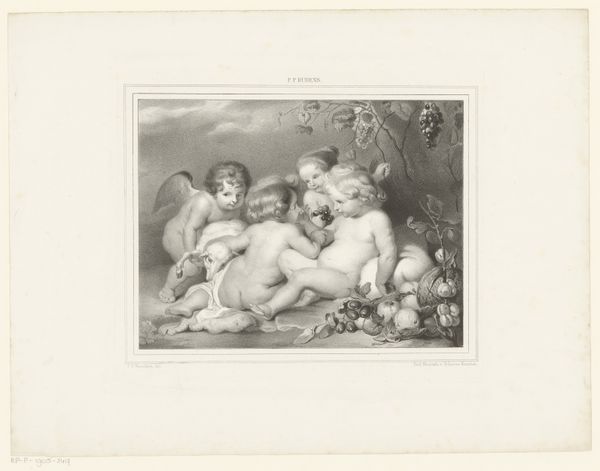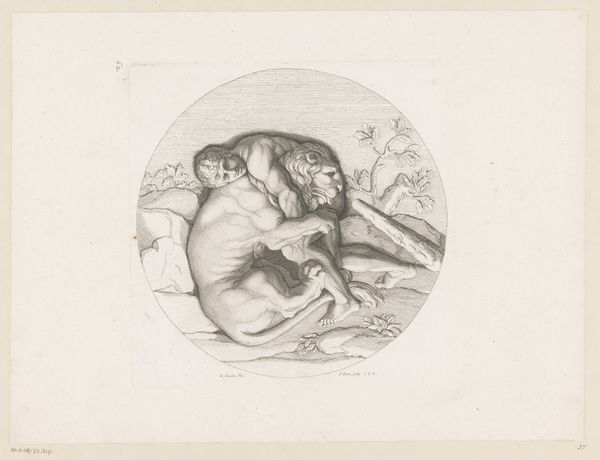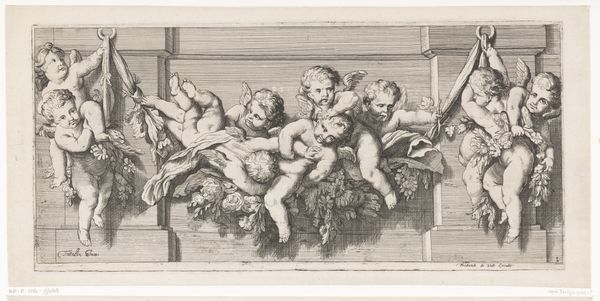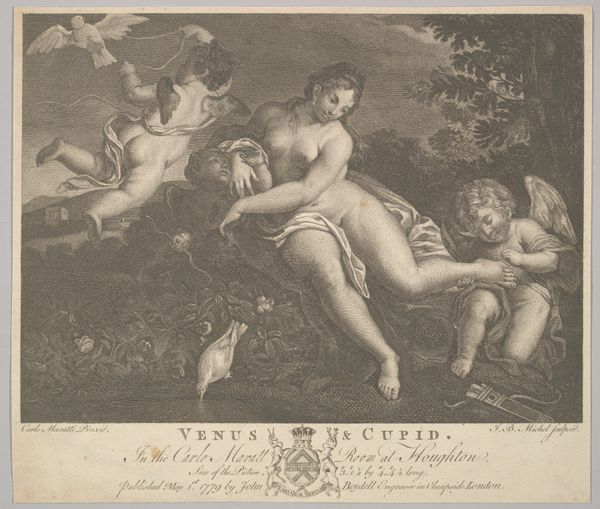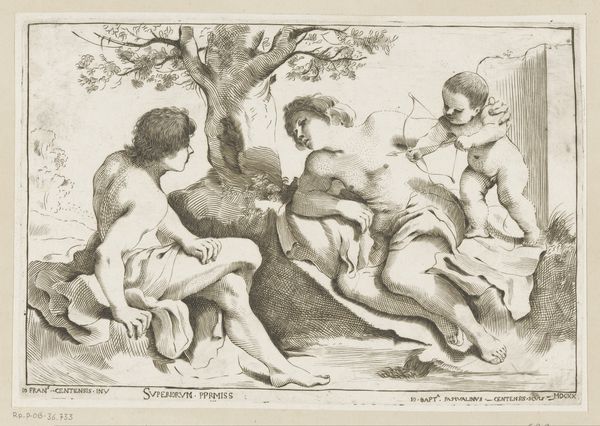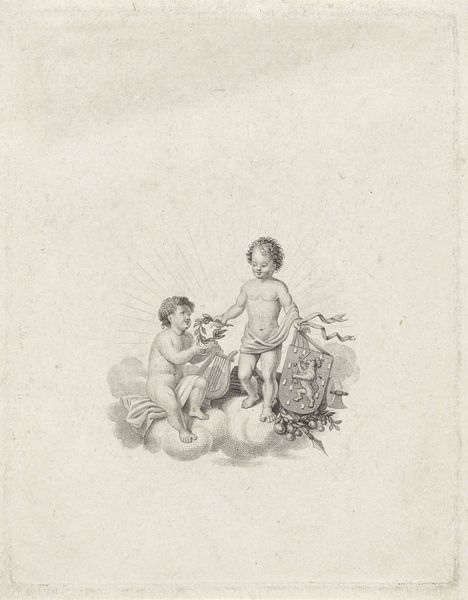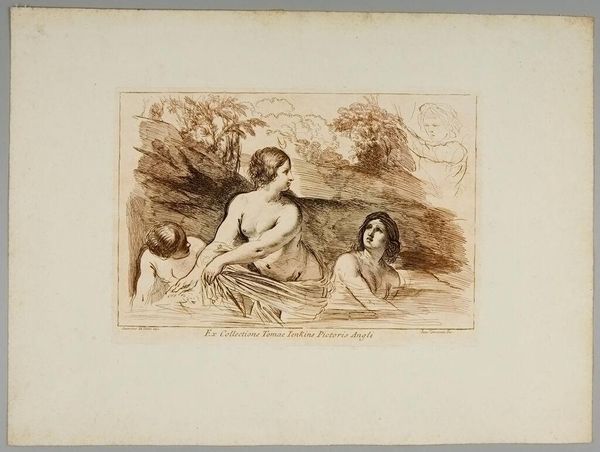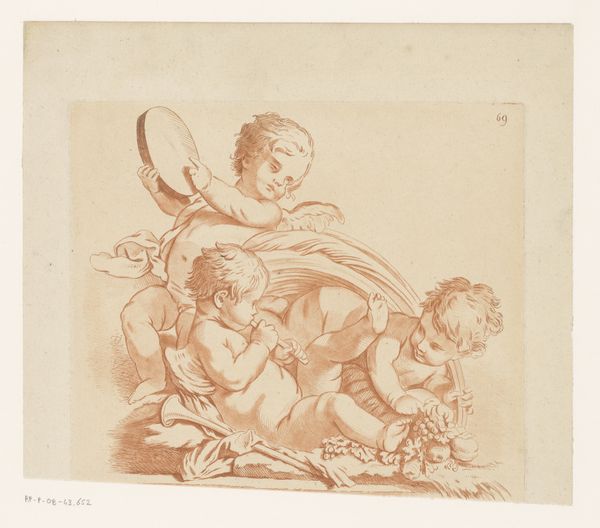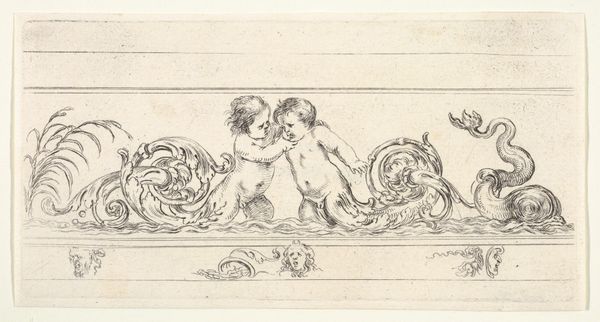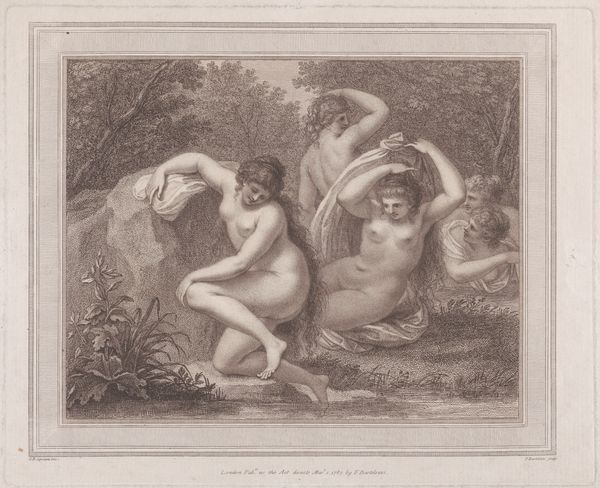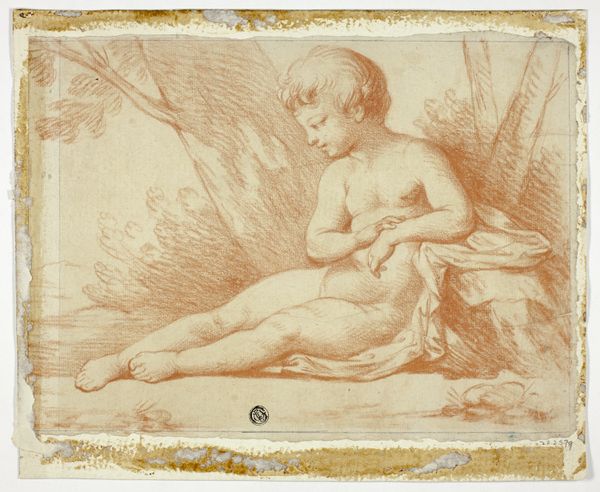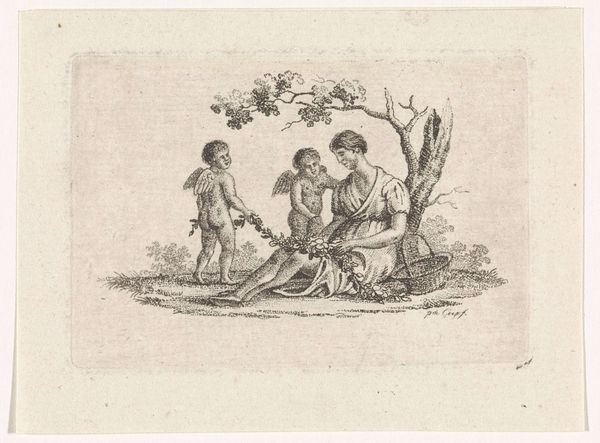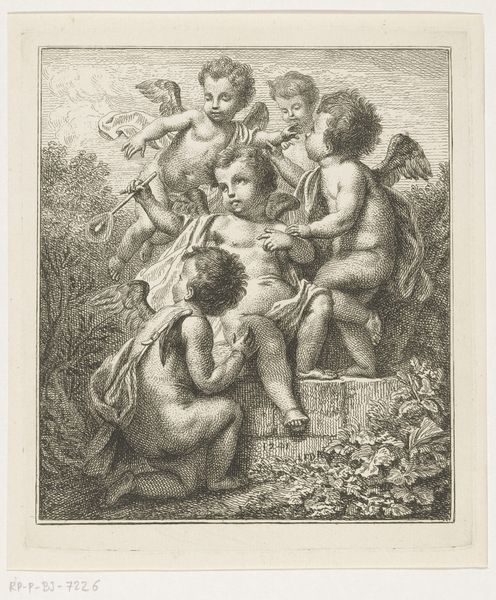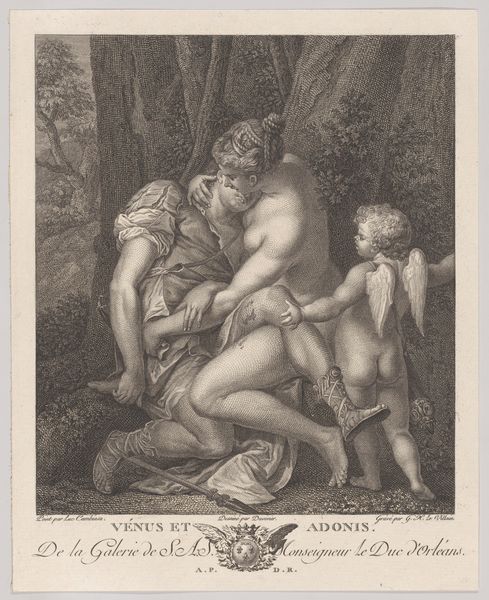
Dimensions: height 290 mm, width 383 mm
Copyright: Rijks Museum: Open Domain
Curator: This print, titled "Four Putti at a Wine Tub," is attributed to Jean-Baptiste Lucien and thought to have been created between 1758 and 1806. It’s an engraving that captures a rather delightful scene. Editor: It certainly evokes a sense of childlike mischief. The reddish-brown ink gives it a warm, almost nostalgic quality, even though I suspect it presents a very idealized, bourgeois vision of childhood. Curator: I would agree about the warmth. Note how the composition, while seemingly informal, actually leads the eye around the cluster of cherubic figures and their various actions relating to the harvest of the grapes. The lines are simple yet refined, each stroke defining the contour, adding to the tonal value that provides weight and movement. Editor: True. I see a very clear relationship between these putti and their ancestors in classical imagery, reborn within a burgeoning context of Rococo frivolity. These “cherubs” are not exactly spiritual beings; rather, they have become vehicles to portray a very tangible reality; labor and enjoyment and privilege that can be purchased. How does this print speak to the class relations inherent in agriculture at the time? Curator: I'm not certain the intent was overt social commentary. Consider the symbolism instead. Wine often represents transformation, celebration. Look at the way the bodies are depicted, all chubby limbs and innocent gazes. There’s a very direct lineage between the Renaissance nudes and the engraver’s command in this image. Editor: But is the symbol devoid of context? The figures are placed in an Arcadian scene but an idealized country that does not necessarily correspond to real labor. This begs the question of whose gaze this serves. This image is certainly palatable, but do the material conditions surrounding winemaking play into this supposedly ‘innocent’ tableau? It seems like more probing would need to be done to determine how the image is entangled with exploitation, privilege, and other modes of domination that marked this particular era of early capitalist modes of production. Curator: Perhaps, but sometimes a grape is just a grape. Let's focus on what's visually present. The composition, tonality and form of Lucien’s rendering achieve harmony in conveying this theme with elegance. Editor: I find such an assertion deeply ahistorical, bordering on actively ignorant, to be frank. Curator: Well, thank you for your insight. Let us move on. Editor: Agreed.
Comments
No comments
Be the first to comment and join the conversation on the ultimate creative platform.
